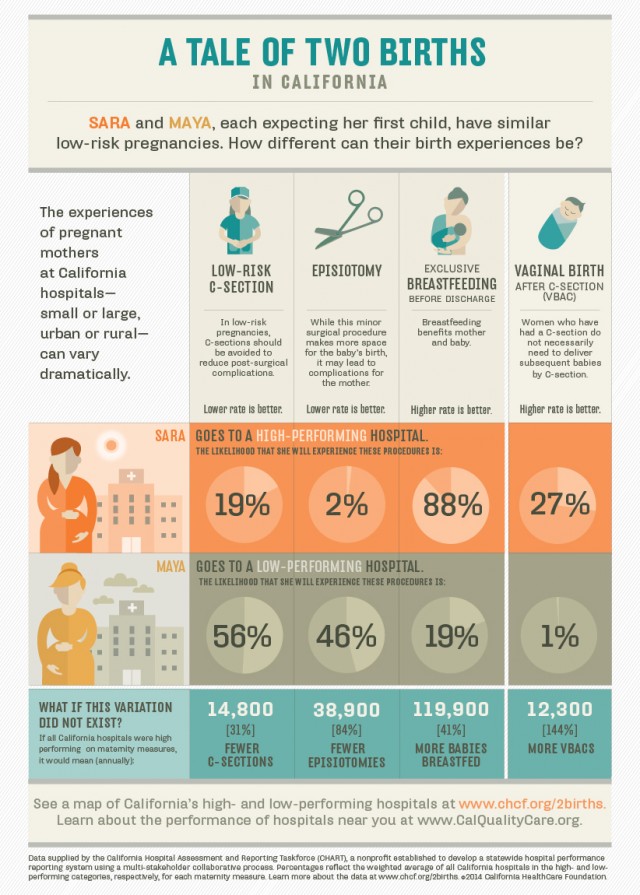Two women in California are having a baby for the first time. They are both low risk, having uneventful pregnancies. But how they will deliver their baby -- whether they'll have a c-section, for example -- depends dramatically on the hospital each woman chooses when she delivers.
The California Hospital Assessment and Reporting Taskforce, or CHART, crunched the numbers and found wide and, frankly, stunning variation in the rates of four common procedures related to delivery and newborn care: c-section, episiotomy, breastfeeding and vaginal birth after c-section.
The Oakland-based California HealthCare Foundation created this infographic to illustrate what CHART found:

CHCF has further taken the data and mapped the state's highest and lowest performing hospitals. (The map does not include all hospitals in California.) Almost all of the 33 high-performing hospitals (88 percent) are in Northern California and include many Kaiser hospitals, San Francisco General, Stanford and Sutter Santa Rosa, to name just a few.
All of the 12 low-performing hospitals are in Southern California and include Citrus Valley Medical Center and Garfield Medical Center.